e
q
u
e
s
t
a
d
e
m
o < back
Data Masking Components: Load Dictionary
{TOC}
SSIS Load Dictionary Component
API Reference, CLR Reference (links)
Usage Instructions:
Purpose
The purpose of the Load Dictionary component is to create a custom dictionary of values for the later use in Dictionary Substitution component. If the data schema includes certain elements that could not be masked using substitution components with pre-packaged data sets such as names or companies, than this particular component allows to create a set of (key,value) pairs in memory. Dictionary Substitution component picks up the values and replaces them with the substitution algorithm. Examples might include creating sets of "languages" from the language table, or "brands" from the brand table in the database, etc.
Algorithm
While none of the data masking algorithms are applicable, Load Dictionary simply retrieves a data set from the indicated source and makes it available via Object type variable.
Description
 Load Dictionary component retrieves the key and the corresponding data field values from the data source, be it a table in a database or a file, and places the set of (key, value pair) into predefined Object Variable to be later used in Dictionary Substitution Component.
Load Dictionary component retrieves the key and the corresponding data field values from the data source, be it a table in a database or a file, and places the set of (key, value pair) into predefined Object Variable to be later used in Dictionary Substitution Component.
|
API Reference,
CLR Reference (links)
Usage Instructions:
| 1. Configure a source that contains the id column and the column you want to create a custom data set from. The picture example is a table of colors with "picture Id" column as an id column and "color" as data value field. |
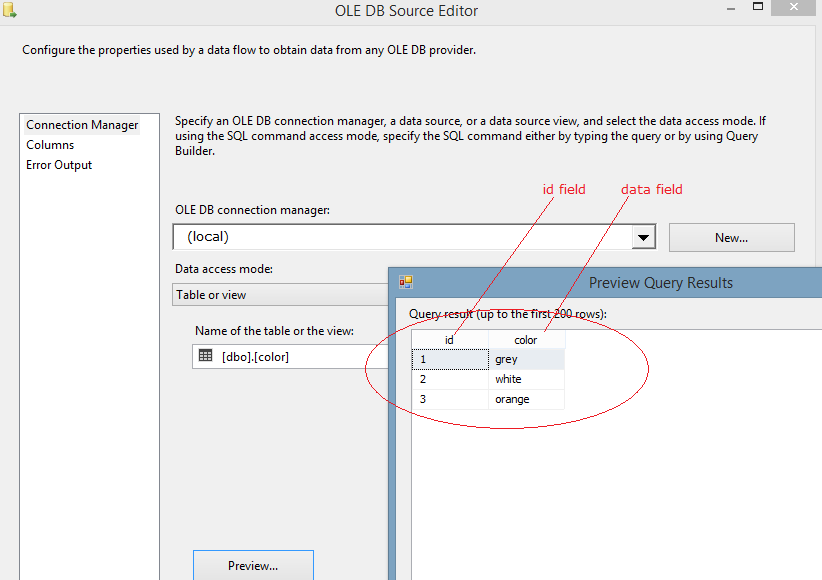
|
| 2. Drag and Drop Load Dictionary data masking component, and connect the source and the Load Dictionary component. |
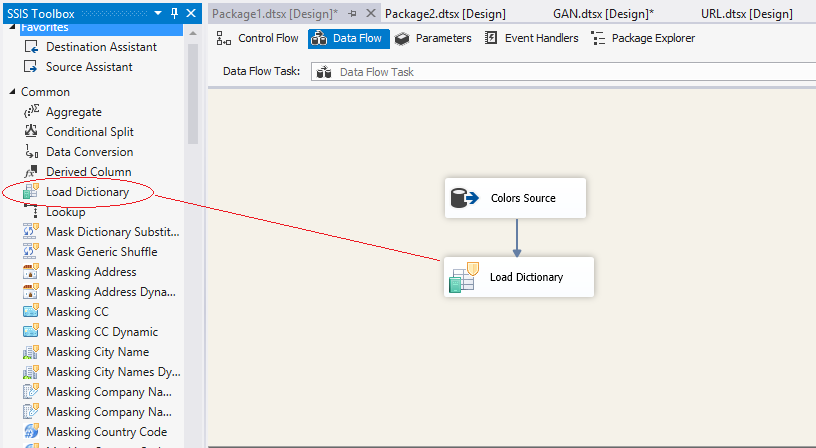
|
| 3. Now, the data flow path(the blue arrow) passes proper meta-data to the Data Dictionary component. If you click on constraint, you will see: |

|
| 4. Now that the metadata for the Data Dictionary exists, and values are passed into the data masking Data Dictionary component, please open the component editor. In the custom properties of "Library Variable Name", please choose the variable of the **object type** that will hold data values as the dictionary. These values are the set that you customarily created. |
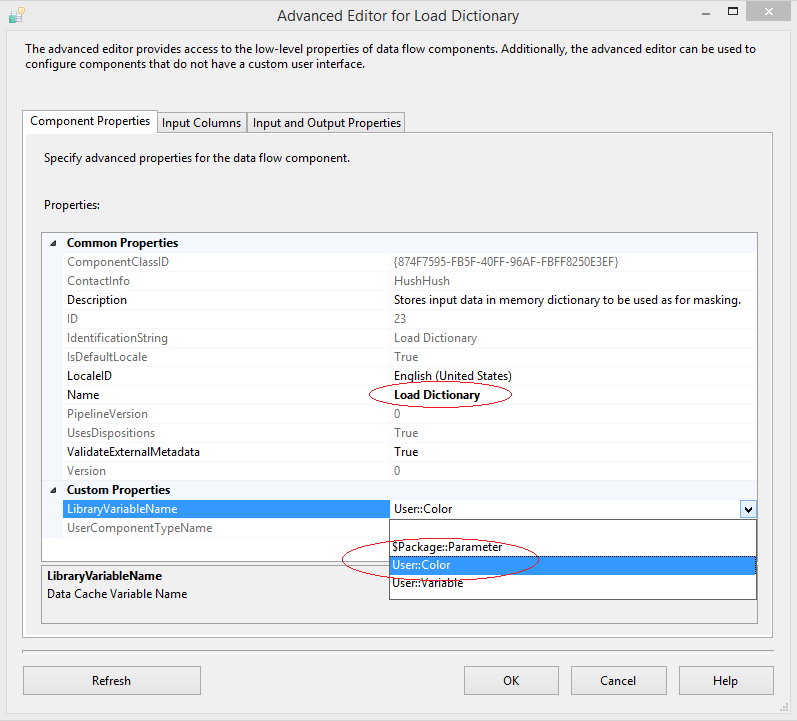
|
| 5. In the second tab, "Input Columns", please check both the Id column and the data column: |
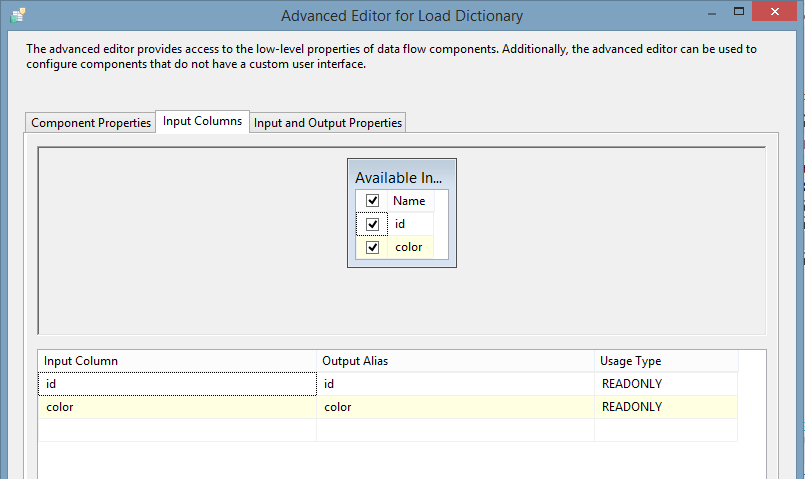
|
| 6. Now, we need to hint SSIS which column values will be loaded into the variable. In the third tab, "Input and Output Properties", expand input columns, highlight the column containing the data value ( in our case, it is "color"), and set its LoadColumn property to "True" |
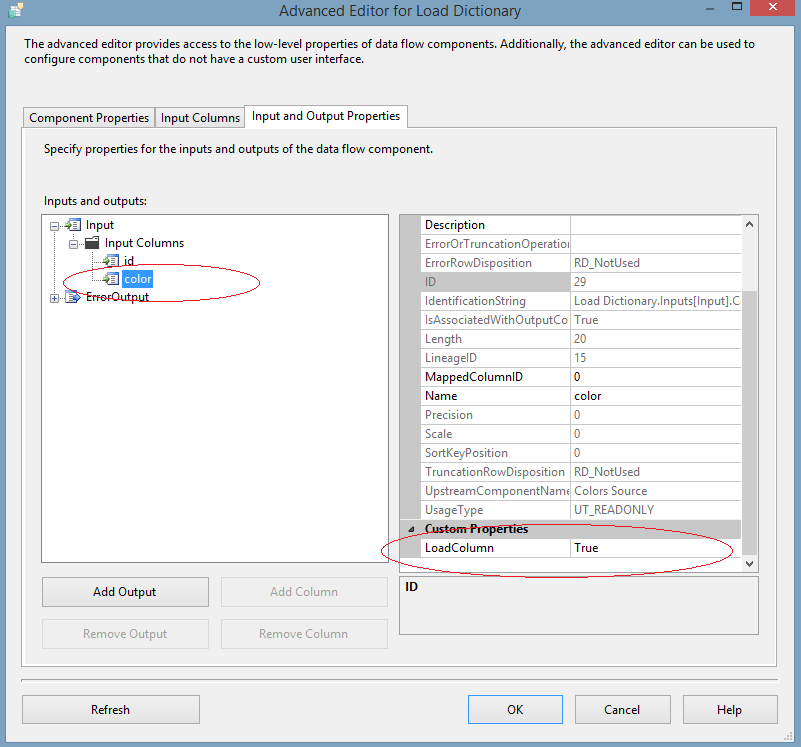
|
| 7. Now we are done with configuring the Data Dictionary. If we run the package, the package will load values of the colors and their ids into the object variable "User::color". We have created a dictionary out of our own values from the table and now we are ready to start the second part of the Dictionary Substitution Algorithm: the substitution itself. |
Error Handling
| 8. There is no specific error handling for this component. |
